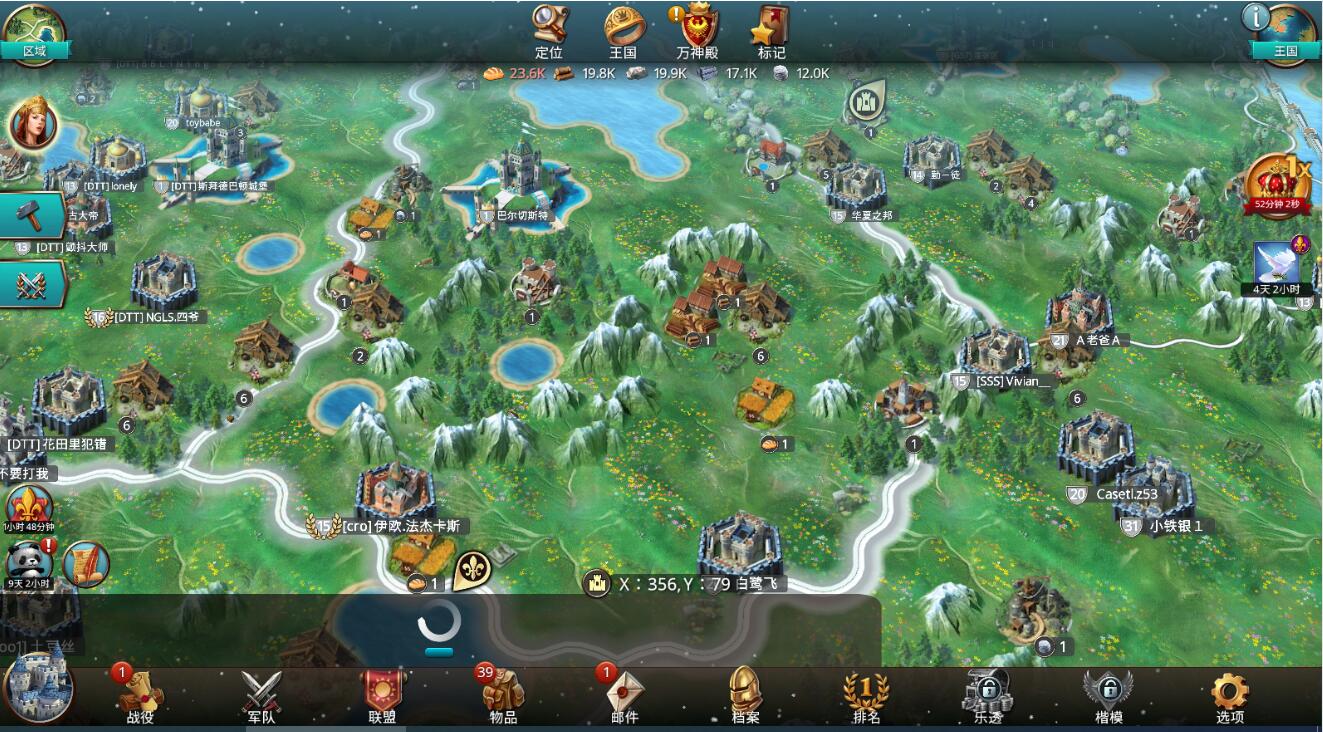代码:
import cv2 import numpy as np from matplotlib import pyplot as plt import win32gui, win32ui, win32con from ctypes import windll from PIL import Image import time from pymouse import PyMouse # 全局变量 left_top=(0, 0)# 窗口左上角的坐标 arr=[]# 图像匹配到的点 arr_res=[]# 已去相似点 # 截图 def getScreenshots(): #获取后台窗口的句柄,注意后台窗口不能最小化 #窗口的类名可以用Visual Studio的SPY++工具获取 className = "Photo_Lightweight_Viewer" titleName = "game-big.jpg - Windows 照片查看器" hWnd = win32gui.FindWindow(className, titleName) #获取句柄窗口的大小信息 left, top, right, bot = win32gui.GetWindowRect(hWnd) left_top=(left,top)# 全局变量赋值 width = right - left height = bot - top #返回句柄窗口的设备环境,覆盖整个窗口,包括非客户区,标题栏,菜单,边框 hWndDC = win32gui.GetWindowDC(hWnd) #创建设备描述表 mfcDC = win32ui.CreateDCFromHandle(hWndDC) #创建内存设备描述表 saveDC = mfcDC.CreateCompatibleDC() #创建位图对象准备保存图片 saveBitMap = win32ui.CreateBitmap() #为bitmap开辟存储空间 saveBitMap.CreateCompatibleBitmap(mfcDC,width,height) #将截图保存到saveBitMap中 saveDC.SelectObject(saveBitMap) #保存bitmap到内存设备描述表 saveDC.BitBlt((0,0), (width,height), mfcDC, (0, 0), win32con.SRCCOPY) #保存图像 保存bitmap到文件 saveBitMap.SaveBitmapFile(saveDC,"img_screenshots.jpg") # 图片识别返回坐标 def getCoordinates(): arr=[] # 截屏保存 getScreenshots() # 1. 读入原图和模板 img_rgb=cv2.imread('img_screenshots.jpg') img_gray=cv2.cvtColor(img_rgb, cv2.COLOR_BGR2GRAY) template=cv2.imread('game-smart.jpg', 0) h, w=template.shape[:2] # 归一化平方差匹配 res=cv2.matchTemplate(img_gray, template, cv2.TM_CCOEFF_NORMED) threshold=0.5 # 返回res中值大于0.8的所有坐标 # 返回坐标格式(col,row) 注意:是先col后row 一般是(row,col)!!! loc=np.where(res >= threshold) # loc:标签/行号索引 常用作标签索引 # iloc:行号索引 # loc[::-1]:取从后向前(相反)的元素 # *号表示可选参数 for pt in zip(*loc[::-1]): right_bottom=(pt[0] + w, pt[1] + h) cv2.rectangle(img_rgb, pt, right_bottom, (0, 0, 255), 2) # 中心点 center_point=(int(pt[0]+w/2), int(pt[1]+h/2)) arr.append(center_point) left2=(center_point[0]-2,center_point[1]-2) right2=(center_point[0]+2,center_point[1]+2) cv2.rectangle(img_rgb, left2, right2, (0, 255, 0), 2) # 保存处理后的图片 cv2.imwrite('img_screenshots_res.png', img_rgb) # 显示图片 参数:(窗口标识字符串,imread读入的图像) #cv2.imshow("test_image", img_rgb) return arr # 判断坐标是否相似 def isLike(arr, obj): for item in arr: if (abs(item[0]-obj[0])<5) and (abs(item[1]-obj[1])<5): return True return False # 坐标数组 arr=getCoordinates() arr_res=[] # 去相似坐标 for item in arr: if isLike(arr_res, item)==False: # 转换为真实坐标 x=item[0]+left_top[0] y=item[1]+left_top[1] arr_res.append((x,y)) # 模拟点击 mouse = PyMouse() for item in arr_res: time.sleep(5) # 休眠1秒 print(item) mouse.click(item[0], item[1]) #移动并且在(x,y)位置左击 # 窗口等待任意键盘按键输入 0为一直等待 其他数字为毫秒数 cv2.waitKey(0) # 销毁窗口 退出程序 cv2.destroyAllWindows()
game-smart.jpg

game-big.jpg

未完。。。